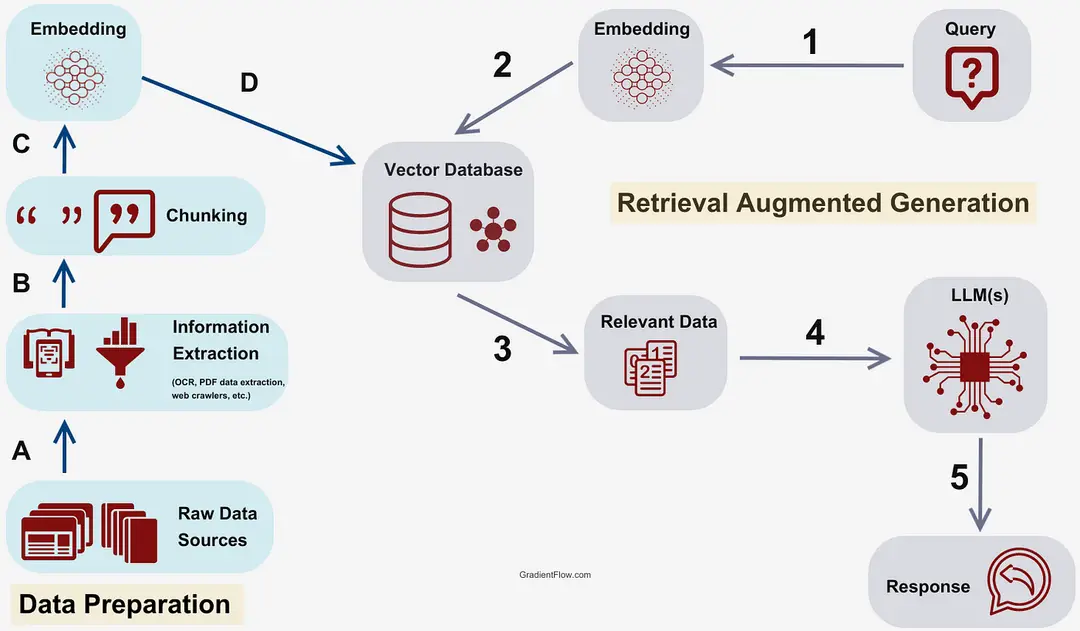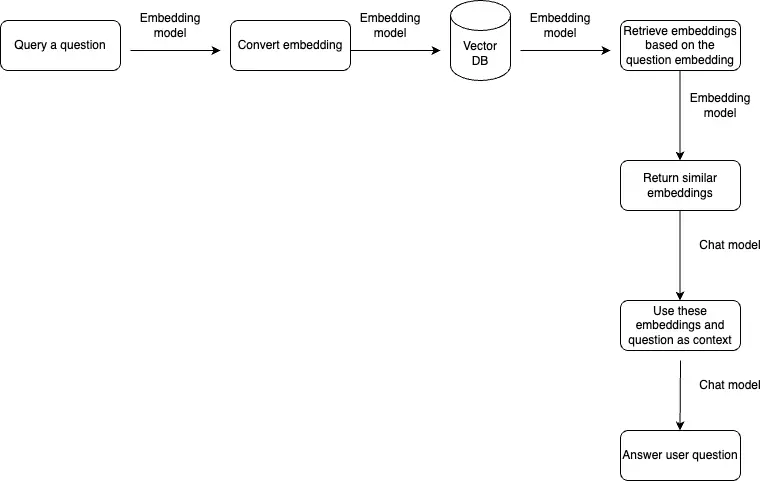Welcome to the Web3 world, where digital finance and applications are shown in a revolutionary way through the fusion of blockchain technology, cryptocurrencies, and a pioneering spirit. Are you overwhelmed by the wealth of terms in the Web3 world that you don’t understand? Are those slang barriers for you to learn about Web3? Don’t worry! We’re here to explain the obscure terms to guide your learning. Today, we're diving into an essential concept in the world of Web3: [Retrieval-augmented generation (RAG)].
Retrieval-augmented generation (RAG) is a cutting-edge approach designed to improve the performance of large language models (LLMs) by integrating external data sources. This method addresses the issue of model hallucinations—where models may generate incorrect or nonsensical information—by grounding responses in factual data retrieved from external knowledge bases. RAG enhances the accuracy and relevance of responses by combining generative capabilities with real-time information retrieval.
RAG emerged from the need to enhance LLMs by integrating external data. Traditional LLMs, despite their power, can sometimes generate imprecise information when queried about topics beyond their training data. RAG was developed to address this limitation by allowing models to retrieve and incorporate up-to-date, contextually relevant information from external sources, thereby improving the reliability of their outputs.
How is RAG Being Used in Web3?
In the Web3 ecosystem, where decentralized technologies and blockchain innovations are prominent, accurate information and context are crucial. RAG-based applications are particularly beneficial in this space: 1. Understanding Web3 Concepts
Web3 includes a range of complex concepts such as decentralized finance (DeFi), smart contracts, and non-fungible tokens (NFTs). A RAG-based application can enhance understanding by retrieving precise information from authoritative blockchain sources. For example, when asked, "What is a smart contract?", a RAG model can provide an accurate explanation based on the latest resources.
Decentralized applications (dApps) involve intricate interactions within blockchain protocols. RAG-based systems can support users by retrieving specific technical details or guidance on using dApps.
For instance, if a user asks, "How do I interact with an ERC-20 token contract?", a RAG-based LLM can provide a response informed by current standards and practices. 3. Enhancing Crypto Trading Insights
In cryptocurrency trading, where timely and accurate information is vital, RAG applications can retrieve and integrate the latest market data, trends, and analysis.
If a trader inquires, "What are the latest trends in Ethereum trading?", a RAG-based system can deliver up-to-date insights and market analysis to aid in decision-making. Creating Embeddings for Your Knowledge
Building a RAG-based application involves creating and managing embeddings for your knowledge base. Embeddings are numerical representations of text that capture semantic meaning. Here’s a step-by-step process:
1.Chunking the Text: Divide large documents into smaller chunks to ensure the model can process the entire content effectively.
2.Generating Embeddings: Use an embedding model (e.g., all-miniLM-V2) to convert text chunks into embeddings. These embeddings represent the text’s meaning in a format suitable for retrieval.
3.Storing Embeddings: Store these embeddings in a vector database (e.g., Qdrant) to enable efficient retrieval and querying.
Lifecycle of a User Query on a RAG-based Application
The lifecycle of a user query in a RAG-based system includes:
1.User Query: The user submits a question in natural language.
2.Embedding Conversion: The query is converted into an embedding using an embedding model.
3.Retrieval of Similar Embeddings: The system searches the vector database for embeddings similar to the query’s embedding.
4.Response Generation: The retrieved embeddings, along with the original query, are used by the chat model (e.g., Llama-3-8B) to generate an accurate and relevant response.
Additional Insight: The Role of GaiaNet
GaiaNet is a prime example of a RAG-based application in Web3. It employs retrieval mechanisms to enhance the accuracy of responses related to blockchain technology and decentralized systems. By integrating external knowledge and using advanced chat models, GaiaNet ensures users receive precise and relevant information.
Retrieval-augmented generation (RAG) represents a significant advancement in natural language processing, especially within Web3 technology. By combining LLMs with robust retrieval systems, RAG-based applications offer enhanced accuracy and relevance in responses. As the Web3 ecosystem continues to evolve, RAG technology will play a crucial role in ensuring that complex concepts and emerging technologies are communicated effectively and accurately.


